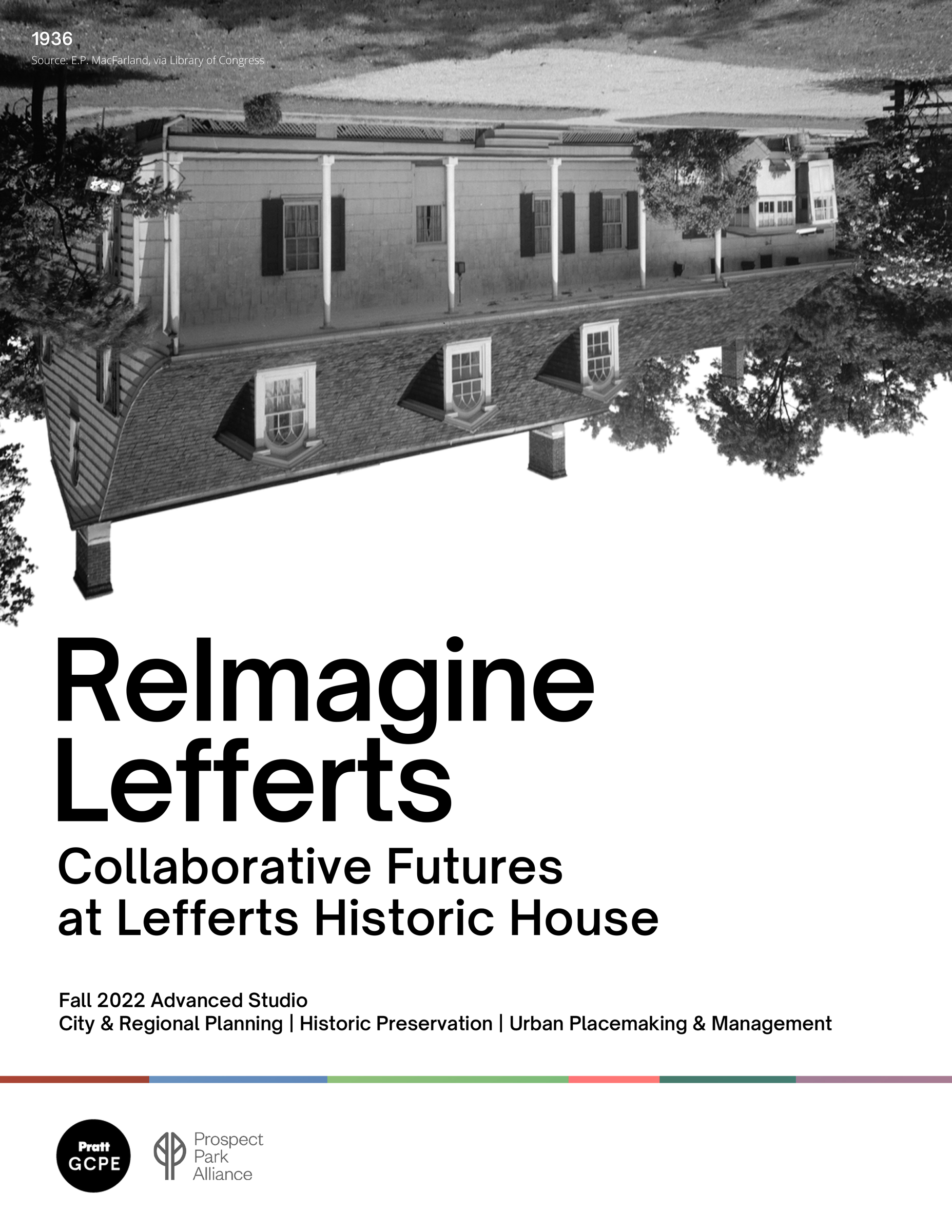HP Studio: Reimagine Lefferts—Collaborative Futures at Lefferts Historic House

Reimagine Lefferts: Collaborative Futures for Lefferts Historic House Pratt History Preservation, City & Regional Planning and Urban Placemaking & Management Joint Studio in partnership with The Prospect Park Alliance
Abstract
The Lefferts Historic House, a landmark designated 18th-century farmhouse, is a historic house museum situated on the eastern side of Brooklyn’s beloved Prospect Park. Despite its diminutive stature, the Lefferts House embodies the broader history of Brooklyn and the diverse peoples who have called it home, including the indigenous Lenape, Dutch settlers, enslaved Africans, and immigrants from various regions of the world. The bordering neighborhoods—Crown Heights, Flatbush, Little Caribbean, and Prospect-Lefferts Gardens —are culturally rich and diverse, yet local residents face intense pressure as gentrification rapidly transforms their communities. As these communities evolve with new generations of Brooklynites, so too must the Lefferts House and its role in the local community.
With investments from the Brooklyn Delegation of the City Council and former New York City Mayor Bill DeBlasio, the Prospect Park Alliance (PPA) undertook physical restoration work on the Lefferts House and commenced its Reimagine Lefferts initiative. With the initiative, PPA has the opportunity to realign the mission of the Lefferts House in a manner that resonates with the residents of the underserved neighboring communities, while also grappling with the complexities of the house’s history as a site of slavery on the unceded land of the Lenape.
In Fall 2022, Pratt Institute’s Graduate Center for Planning and the Environment (GCPE) partnered with PPA to conceptualize its ReImagine Lefferts initiative. Collaborative Futures at Lefferts Historic House is the culmination of research, exploration, and design from a team of 17 young professionals pursuing degrees in City & Regional Planning, Historic Preservation, and Urban Placemaking & Management. The interdisciplinary academic setting allowed the team to apply Pratt’s theoretical and practice-based curriculum and professional tools to current challenges and opportunities alongside community partners and faculty.
Following a values-driven research methodology, students reviewed archival maps and sources to historically contextualize the Lefferts House. They then conducted an analysis of existing and historic conditions of the neighborhoods surrounding Prospect Park, created an inventory of contemporary stakeholders and community institutions, and explored case studies for both community engagement and innovations in historical interpretation. Students arrived at the following preliminary findings that are further discussed in the report:
- Displacement is a throughline that connects the study area’s existing conditions with its history.
- Housing pressure is mounting for the traditionally Afro-Caribbean residents living in the neighborhoods east and south of Prospect Park, including Crown Heights, Flatbush, and Little Caribbean.
- There is a lack of a nuanced understanding of African American and Indigenous customs and history in Brooklyn due to silences in the historical record.
- Accessibility and community engagement must be reconsidered in order for the Lefferts House to become a local asset and destination for residents.